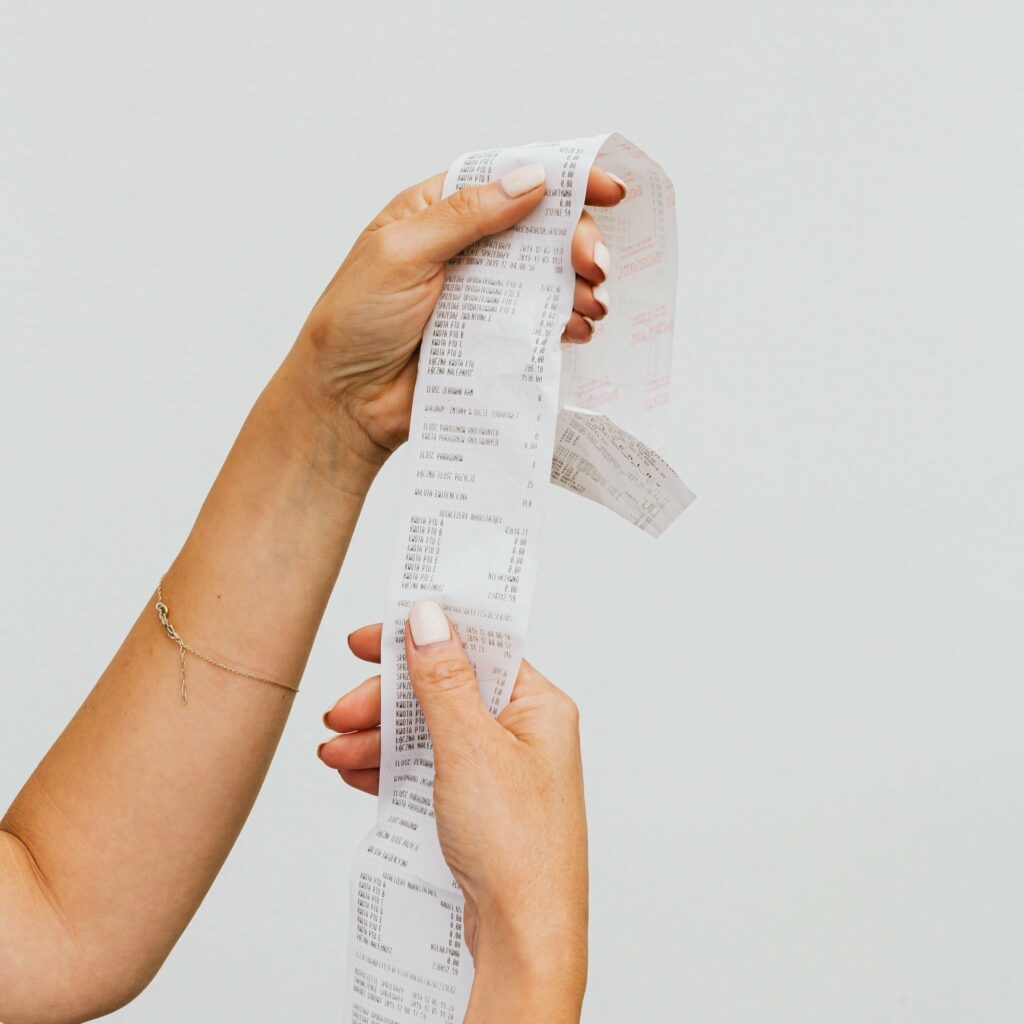CA Sales Tax Changes Interior Designers Need To Know In 2025
Keeping up with CA sales tax changes while running your interior design business can feel like trying to pick the perfect paint color in constantly shifting light! You’re focused on creating stunning spaces and delighting clients. Not figuring out complex tax codes that seem to evolve every few months.
Understanding CA sales tax changes isn’t just about avoiding penalties. It’s about protecting your creative business. When you grasp how these rules apply specifically to interior designers, you gain confidence in your pricing, improve client communication, and ultimately build a more profitable design firm.
In this guide, we’ll transform those complicated California sales tax rules into practical, designer-friendly advice that you can actually use in your business.

Understanding California Sales Tax For Designers
At its core, sales tax is an additional percentage charged on purchases, collected by businesses like yours, and then passed along to the state government. The statewide base sales tax rate in California is currently 7.25%, but most locations add district taxes that can significantly increase the total rate you need to charge.
These district taxes vary widely between cities and counties, making it essential to check the exact rate for each transaction location. The California Department of Tax and Fee Administration (CDTFA) offers an online lookup tool that provides the exact sales tax rate for any address in California. A must-have resource for designers working across different areas.
What Makes Interior Design Unique for Sales Tax?
Your interior design business faces unique sales tax challenges because you usually deal with a mix of:
- Physical products (furniture, décor, materials)
- Custom-made items and installations
- Bundled services with products
- Design consultations (in some circumstances)
- Digital design files and deliverables
The complexity becomes greater when you’re creating custom pieces, bundling products with services, or working across multiple tax jurisdictions for different clients. When you’re coordinating project management through platforms like Houzz Pro, these tax considerations don’t automatically resolve themselves. Though such tools can help you track taxable items more efficiently.
Use Tax and Resale Certificates
When you purchase items for your design projects from out-of-state vendors who don’t collect California sales tax, you’ll need to pay use tax. Which is essentially equivalent to sales tax but for purchases where it wasn’t collected at the time of sale.
For purchases specifically intended for resale to clients, you can provide a valid resale certificate to avoid paying sales tax on those purchases. Without this documentation, you might end up double-taxed, paying sales tax when you buy the item and then collecting it again from your client.
Must-Know Tax Principles For Designers
Understanding the key tax concepts that affect your design business can save you from costly mistakes and unexpected tax bills.
What is Nexus?
Nexus is what triggers your requirement to collect sales tax in California. For interior designers, several activities can create nexus:
- Having a physical studio or office
- Employing staff who work in California
- Attending trade shows or design events in the state
- Meeting with clients in person
- Storing inventory in California
- Exceeding certain sales thresholds (economic nexus)
Even if your design business is based outside California, you might still have nexus if you frequently work with California clients or travel to the state for business.
Common Sales Tax Pitfalls
Aside from not properly using resale certificates or tracking use tax, other common mistakes include:
- Not Separating Labor and Materials: If you charge separately for design labor and physical materials, you generally only need to collect sales tax on the materials portion of your invoice, but you must clearly document this separation.
- Mishandling Digital Products: The taxability of digital design files can be complex. Generally, if clients purchase digital design files they can use repeatedly, these may be subject to sales tax.
Proper bookkeeping is crucial to tracking these distinctions correctly and maintaining accurate records for tax purposes.
Recent CA Sales Tax Changes
California’s sales tax landscape continues to evolve, with a few significant developments affecting interior designers:
Economic Nexus Threshold
California now enforces an economic nexus threshold of $500,000 in annual sales, meaning you must collect sales tax if your sales in the state exceed this amount, even without a physical presence there. This particularly impacts designers who work remotely but serve California clients.
Marketplace Facilitator Laws
If you sell design products or services through online marketplaces, the platforms themselves may now be responsible for collecting and remitting sales tax. This shift affects designers who use multiple sales channels.
District Tax Rate Updates
Several California jurisdictions have adjusted their local tax rates in 2025, potentially affecting your total tax collection obligations depending on where your projects are located. Before finalizing any client proposal, verify the current combined rate for that specific location.
Digital Products Clarification
As more design work transitions to digital deliverables, California has refined its taxation rules for digital products. Design files, 3D renderings, and other digital assets now have clearer taxation guidelines based on their use and transferability.
How These Changes Impact Your Design Business
These tax developments reach into multiple aspects of your operations:
Project Pricing Structure
You may need to reconsider:
- Base rates for design services
- Product markup strategies
- Location-based pricing adjustments
- Delivery and installation fee structures
Many designers find that working with qualified CFO services helps develop pricing strategies that account for these tax complexities while maintaining healthy profit margins.
H4: Client Documentation
Your paperwork likely needs updates to:
- Service agreements
- Tax disclosure statements
- Project proposals
- Payment schedules
Clear client communication about tax implications has become more important than ever. When using QBO for your accounting, ensure your tax settings accurately reflect current requirements for different transaction types.
Real-World Examples
The Multi-State Designer: Consider a designer who runs her business from Nevada but serves several clients in California. Though she doesn’t maintain a physical office in California, her annual sales to California clients exceed $500,000. Under current economic nexus laws, she must register for a California sales tax permit and collect appropriate taxes on all her California projects.
The Product-Heavy Designer: Picture a designer who specializes in full-service design with substantial furniture and décor procurement. With district tax changes across various California counties, he needs to verify the correct rates for each client location before finalizing proposals. His best practice involves checking the CDTFA website for current rates as part of his proposal preparation process.
The Digital Designer: Imagine a designer who creates custom digital design packages including 3D renderings and virtual room layouts. With California’s clarified rules on digital products, she now needs to collect sales tax on certain digital deliverables that previously existed in a gray area, requiring thoughtful adjustments to her service packages and pricing structure.
Practical Tax Management
Now that you understand what triggers tax collection and the common pitfalls, let’s focus on the practical side of managing your tax responsibilities.
Effective Record-Keeping
Staying compliant with California’s sales tax regulations requires organized systems to track:
- Taxable sales by jurisdiction
- Exempt transactions with supporting documentation
- Sales tax collected and remitted
- Use tax obligations on out-of-state purchases
While the IRS has specific guidelines for federal tax matters, California adds its own layer of complexity with unique sales tax regulations. Many designers find it helpful to integrate their tax management systems with their design project management tools, making sure tax considerations are included from the project’s start.
Compliance Timeline
Understanding your filing frequency is crucial. The CDTFA generally assigns monthly, quarterly, or annual filing periods based on your sales volume. Mark these deadlines in your calendar and set reminders well in advance:
- Register for a sales tax permit if you have nexus
- Calculate and collect the correct tax on taxable sales
- Document exempt sales with appropriate certificates
- File returns and remit taxes by the assigned deadlines
- Maintain records for at least four years
TechSolutions
Using technology can reduce the burden of sales tax compliance:
- Tax calculation software that integrates with your invoicing system
- Automated filing services for multiple jurisdictions
- Digital storage for tax documentation
- Regular system audits to verify accuracy
Client Communication Strategies
How you present and explain tax requirements can make the difference between clients who understand the value you provide and those who question every line item.
Discussing Taxes Upfront
Rather than surprising clients with tax details at the end of a project, bring up taxation during your initial consultation. This transparent approach:
- Builds trust with clients
- Prevents misunderstandings about final costs
- Positions you as a professional who handles all aspects of business properly
- Creates opportunities to explain the value you provide in managing these complexities
A simple statement like, “I’ll handle all the sales tax requirements for your project, and here’s how that will work…” can set the stage for smooth client relationships.
Tax-Ready Contracts
Your client contracts should clearly address tax collection:
- Specify that applicable sales tax will be added to invoices
- Note that tax rates are subject to change based on current regulations
- Clarify responsibility for use tax on client-purchased items
- Explain tax treatment of deposits and progressive payments
Consider having an attorney review your contracts to make sure they adequately address current tax regulations. This investment can prevent costly misunderstandings later.
For more insights on building a profitable design business while maintaining tax compliance, check out our guide on ways to build a profitable design business.
Planning For Future Tax Changes
Creating a forward-looking tax strategy helps you manage changes smoothly without disrupting your creative work or client relationships.
Working with a Specialized Tax Advisor
Partner with a tax professional who understands the unique aspects of interior design businesses, like our team at Logistis For Designers, who specialize exclusively in accounting for interior designers.
Regular check-ins with your tax advisor can help you:
- Anticipate the impact of pending legislation
- Adjust your business structure for optimal tax management
- Identify potential savings opportunities
- Develop strategies for multi-state operations
Staying Informed
Keep track of potential changes that might affect your design business:
- New rules governing design services
- Changes in digital product taxation
- Updates to local tax rates
- New compliance requirements
Resources to help you stay informed include:
- CDTFA email updates and newsletters
- Professional design association tax bulletins
- Industry-specific tax webinars and seminars
Taking The Stress Out Of Sales Tax
With the right knowledge, systems, and professional support, tax compliance becomes just another well-managed aspect of your operation.
By implementing the strategies we’ve discussed, you’ll be well-positioned to navigate California’s complex sales tax landscape while keeping your focus where it belongs: on your creative work and client relationships.
Ready to take the next step toward tax confidence? Contact us today for a free consultation and let us help you take the stress out of sales tax compliance.
FAQs
How do I know which sales tax rate to charge my California clients?
Check the CDTFA website for the most current rates based on the specific location where your client will receive or use the products or services.
Do I need to collect sales tax on my design services?
Pure design services are generally not taxable, but if you provide tangible personal property or certain digital products along with your services, the rules become more complex. The key is whether your service results in the transfer of tangible personal property.
What records should I keep for sales tax purposes?
Maintain copies of all sales invoices, resale certificates, exemption documentation, tax returns, and evidence of tax payments for at least four years.
How do I handle sales tax when I purchase items for clients?
You have two options: purchase items tax-free with a resale certificate and then collect sales tax from your client, or pay the sales tax yourself and build it into your marked-up price to the client.
What if I work with clients in multiple California cities?
You’ll need to charge the appropriate sales tax rate for each location where your clients receive your products or services. This means tracking different rates for different projects.
How do recent marketplace facilitator laws affect my online design store?
If you sell through online marketplaces that qualify as marketplace facilitators, they may now be responsible for collecting and remitting sales tax on your behalf, potentially simplifying one aspect of your tax compliance.
Share On:



